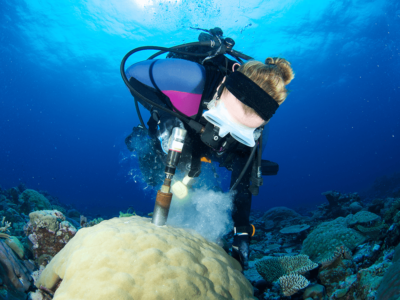Pacific-wide pH snapshots reveal that high coral cover correlates with low, but variable pH
Manzello D. P., Enochs I. C., Carlton R., Bruckner A., Kolodziej G., Dempsey A. & Renaud P. Pacific-wide pH snapshots reveal that high coral cover correlates with low, but variable pH. Bulletin of Marine Science. Volume 97, Number 1, January 2021, pp. 239-256(18). https://doi.org/10.5343/bms.2019.0100 (2021)
Please find an excerpt of the full PDF below
Published in Bulletin of Marine Science
Abstract

Ocean acidification (OA) is impairing the construction of coral reefs while simultaneously accelerating their breakdown. The
metabolism of different reef organism assemblages alters seawater pH in different ways, possibly buffering or exacerbating OA impacts. In spite of this, field data relating benthic community structure and seawater pH are sparse. We collected pH time-series data snapshots at 10 m depth from 28 different reefs (n = 13 lagoon, n = 15 fore reef) across 22 Pacific islands, spanning 31° latitude and 90° longitude. Coincident with all deployments, we measured percent cover of the benthic community. On fore reefs, high coral cover (CC) negatively correlated with mean and minimum pH, but positively correlated with pH variability. Conversely, pH minima were positively correlated to coverage of coralline and turf algae. Benthic cover did not correlate with pH in lagoonal reefs. From 0% to 100% CC, mean pH and aragonite saturation state (Ωarag) declined –0.081 and –0.51, respectively, while declines in minimum values were greater (Δmin pH = –0.164, Δmin Ωarag = –0.96). Based upon previously published relationships, the mean pH decline from 0% to 100% CC would depress coral calcification 7.7%–18.0% and increase biologically-mediated dissolution 13.5%–27.9%, with pH minima depressing dark coral calcification 14.4%–35.2% and increasing biologically-mediated dissolution 31.0%–62.2%. This spatially expansive dataset provides evidence that coral reefs with the highest coral cover may experience the lowest and most extreme pH values with OA.